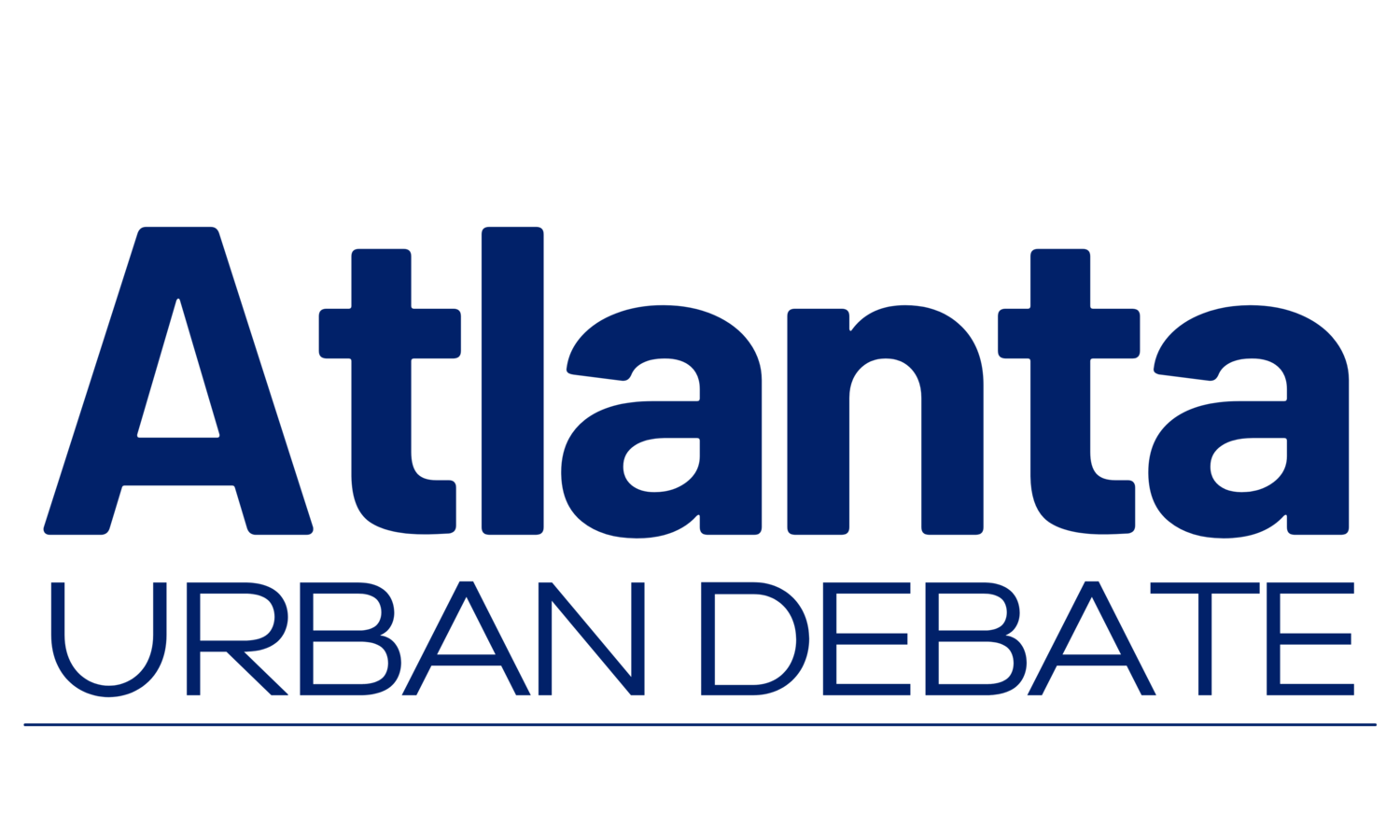The Atlanta Urban Debate League is committed to providing excellent debate education programs, services, and opportunities to diverse students, educators, and members of the community!
Beginner High School Curriculum Guide
Being Affirmative and Negative
You’ll get to debate on both the affirmative and negative side twice during a debate tournament. That means you can’t pick your favorite side and only prepare for affirmative or negative debates, so you should know about the basics of both sides.
Affirmative
The affirmative side supports the resolution, which is a given year’s debate topic. Past topics have included reducing restrictions on immigration and increasing financial support for education. The affirmative proposes a case under that resolution, and that’s centered around what we call a plan, which or a concrete policy proposal. It’s their job to prove that the plan is a good idea, while the negative must prove that the plan is a bad idea.
A complete case will identify a problem within the resolution that needs to be fixed (inherency), present a plan on how to fix the identified problem (plan), provide proof that the plan will address that problem (solvency), and the benefits that will be gained from doing the plan (harms/advantage). This ends with an impact that you’ll compare to the negative’s impact. Use the acronym HIPS or SHIP to remember the parts of an affirmative case.
Negative
The negative side’s job is to prove that the plan is a bad idea. They will make arguments that use DR. MO to respond to the affirmative case, and those are called on-case arguments. They’ll also read separate arguments of their own that prove the affirmative case is a bad idea, and these are called off-case arguments.
The only type of off-case argument you’ll get in novice debate is called a disadvantage. A disadvantage is the opposite of an advantage – instead of a reason why the plan is good, it’s a reason why the plan is bad. A disadvantage is a chain of events that would happen as a result of the plan that would end with something terrible happening.
A complete disadvantage has three or four parts. It has proof that the status quo, or present day, is alright right now – but it could make a turn for the worst if something changed (uniqueness), proof that the affirmative would cause that change (link), and the awful results of that change (impact). Sometimes disadvantages come with internal links, and these are just an extra step between the link and the impact.
Example
Here’s an example affirmative case and disadvantage. I’ve broken each argument into just its assertion:
Resolution: Waffle House should change its menu.
Affirmative Case
Plan: Waffle House should stop selling waffles.
Inherency: Waffle House is currently selling waffles.
Harms: Waffles are unhealthy and can cause obesity.
Solvency: Not selling waffles would boost the health of Waffle House customers.
Negative Disadvantage
Uniqueness: Waffle House is currently a profitable company.
Link: Waffles are key to Waffle Houses’ profit margins.
Internal Link: Profits are necessary to keep Waffle House in business.
Impact: Waffle House would shut down.
